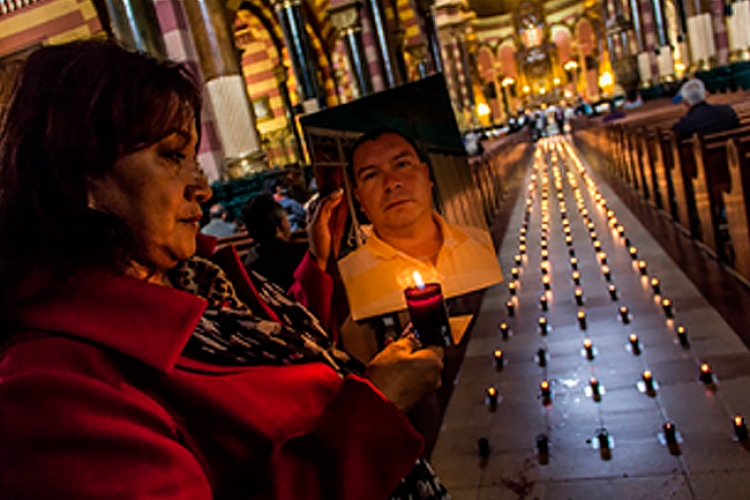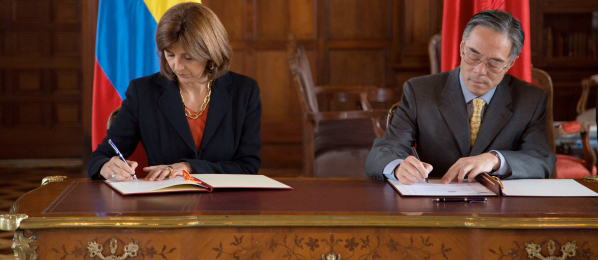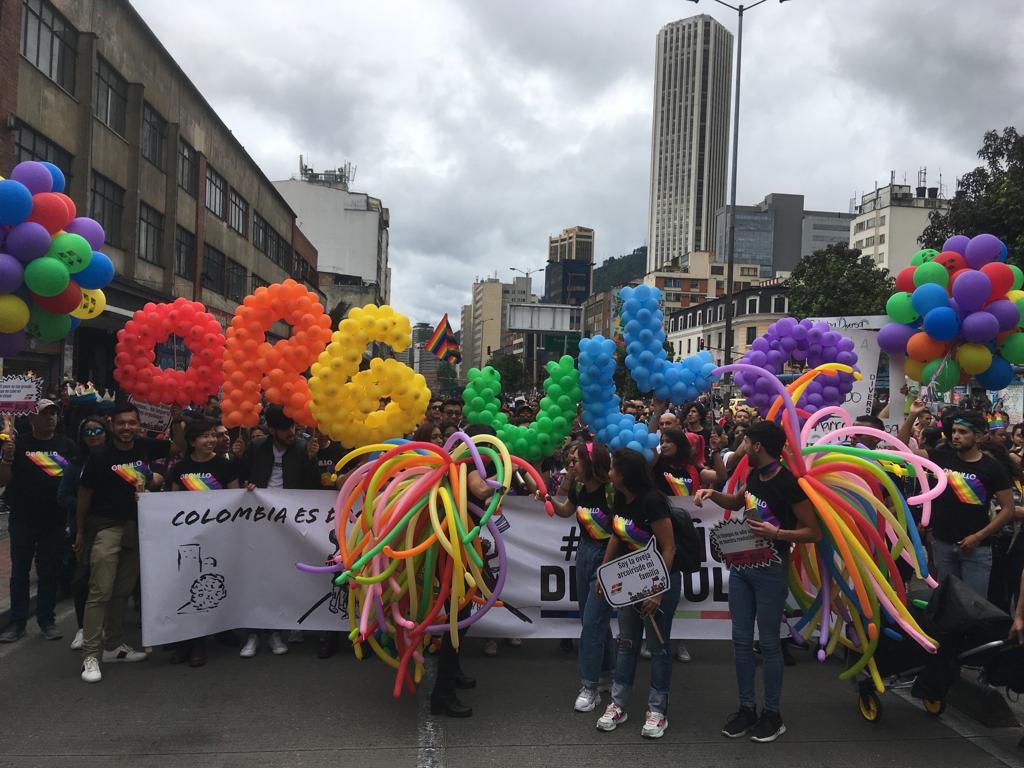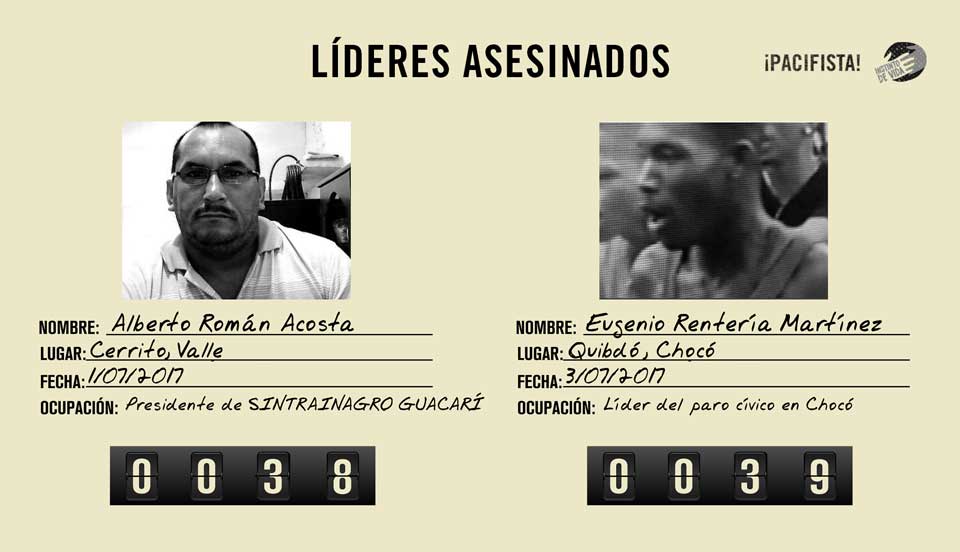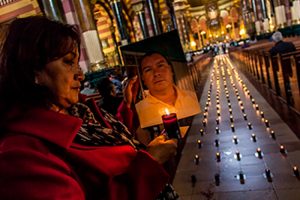
Photo courtesy of Alvaro Cardona for CNMH
According to new research published by Centro Nacional de Memoria Historica (National Center for Historical Memory), 82,998 people were forcibly disappeared between 1958 and 2015.
Following the publication of a 2016 study ‘Hasta encontrarlos. El drama de la desaparición forzada en Colombia’, which numbered the disappearances from the 70’s until 2015 at 60,630, the Observatorio de Memoria y Conflicto (Observatory of Memory and Conflict) found new sources of disappeared people who had never been registered in the RUV (Unique Registry of Victims). They also went back further in time to 1958, and the number increased to over 80,000.
However, when they looked at the perpetrators of these crimes, the trends were the same; paramilitary groups remain the biggest culprits of the forced disappearances. Although only 63% of the cases have known perpetrators, within this number, the largest groups were paramilitary groups(63.3%), followed by guerillas (24.3%), Armed Post-Demobilisation groups (6.5%) and State agents (5.8%). Andres Suarez, coordinator of the Observatorio, explained on the CNMH website that in many cases, the paramilitary groups, Armed Post-Demobilisation groups and the agents of the state worked together to create disappearances.
Since the peace treaty between the Colombia government and FARC, the government seems to be making a concerted effort to find more information about the thousands of people who went missing in this period. The Unidad de Búsqueda de Personas Desaparecidas (Search Unit for missing people) was formed in April 2017, but, according to an interview with the director, Luz Marina Monzón in Semana at the beginning of this year, “The search for missing people doesn’t appear on any political agenda”. It is difficult to take effective action against disappearances, and it’s a struggle to bring these people to justice.
Disappearances play a huge role in the culture and history of Colombia. There are three main reasons why they are such an effective tool for groups who want to take control of a country, as described in detail in the ‘Hasta Encontrarlos’ study.
The first is that it is a way to punish a community for their actions, and to leave instructional messages to prevent the growth of certain ideologies or social and political practices.
The second is that it generates terror and allows the group to exert their control over a set of people. This can be done either with disappearances or even with the exhibition of cadavers, which are manipulated in a way so that it’s impossible to recognise the body.
The final reason is that it is essentially, a ‘clean’ crime. There is no evidence left for the family or the police, and repercussions are unlikely. If repercussions are imminent, however, it isn’t uncommon for high profile or strategic people to be ‘disappeared’ in order to prevent investigations.
However, although the efficacy of this crime is undeniable, what is also beyond question is the profound damage it has on the people themselves. This damage extends beyond the family and friends of the victim, into the community, and the society as a whole.
The CNMH publication ‘Entre la incertidumbre y el dolor’ (Between uncertainty and pain) is an investigation of the psychosocial effects of a disappearance. It describes it as a ‘double torture’: the physical, which the victim is undergoing, and the psychological, which the family are subjected to. On one hand, they hope that their loved one is still alive, but then the fear of the pain or torture they could be undergoing dampens this hope. On the other hand, if they are dead, they are gone forever with no hope of goodbye. A testimony of an unnamed woman from Antioquia, was quoted in Basta Ya!
“When it comes to disappearances, you know that when someone disappears, the family slowly starts to die.”
Not only did the families have to suffer the uncertainty of where their loved one is, they also had to fight for the truth to be believed. During the forced disappearances in La Sonora, Trujillo, on the 31st March 1990, there were criminal alliances between the Public Forces, paramilitaries and drug traffickers, who refused to give any credit to the families’ demands for justice. The Major of the Batallon Palace told ‘El Tiempo’ that “The young people of La Sonora weren’t ‘disappeared’, they merely escaped…they’ll be back in a fortnight.” As a result, less and less families began to tell the authorities of these disappearances due to a profound lack of faith in the authorities.
Colombia has been living in fear of speaking out against these crimes for years.
“If nobody talks about it, if nobody writes or tells stories, little by little it gets covered up by fear[…] Because nobody talks about what happened, nothing happened.” A man from Trujillo told Basta Ya!. However, because of the CNMH, many families of those ‘desaparecidos’ now have their stories in the public eye and, most importantly, they are believed.
The families of the disappeared have been left wondering where their loved ones are and what has happened to them. The CNMH has the important task of researching these disappearances and bringing them to light, unearthing the stories underneath the layers of fear and silence that have covered Colombia for decades.
The CNMH is a public service that aims to collect all historical material to do with victims of the armed conflict in Colombia, and its archives are available to the public. The CNMH is open weekdays and is located in Barrio La Merced, Bogotá.

